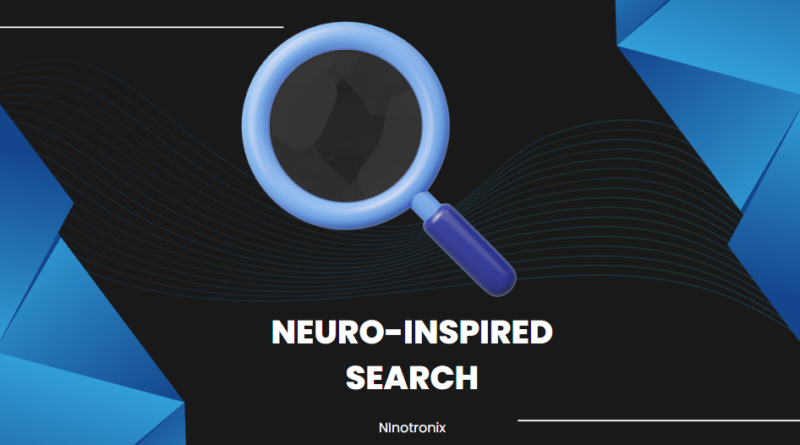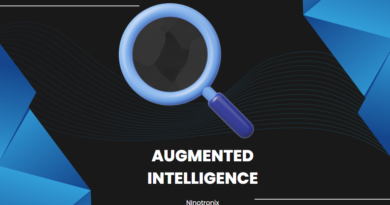Neuro-Inspired Search: Mimicking the Human Brain in Cognitive Systems
Neuro-inspired search refers to the development of cognitive systems that mimic the complex and efficient processes of the human brain. By drawing inspiration from the structure and functioning of the brain, researchers and engineers have been able to create search algorithms and architectures that exhibit enhanced capabilities in information retrieval and understanding. In this article, we delve into the concept of neuro-inspired search and explore how it is revolutionizing cognitive systems. We will discuss the key principles and steps involved in mimicking the human brain to create efficient and intelligent search systems.
Understanding the Brain’s Architecture : To mimic the human brain, it is crucial to comprehend its intricate architecture. The brain consists of billions of interconnected neurons organized in complex networks. These networks enable the brain to process and store information, recognize patterns, and make decisions. Understanding the principles of neural connectivity and information processing forms the foundation of neuro-inspired search.
Step 1: Neural Network Modeling : The first step in building neuro-inspired search systems is to develop neural network models. These models replicate the connectivity and information processing capabilities of the brain. Different types of neural networks, such as feedforward, recurrent, or convolutional networks, can be employed based on the specific requirements of the search task. The neural network models are trained using large datasets, allowing them to learn patterns, relationships, and representations that enable efficient information retrieval.
Step 2: Neuroplasticity and Learning : Neuroplasticity, the brain’s ability to adapt and learn, is a fundamental aspect of neuro-inspired search. In cognitive systems, neuroplasticity is emulated through machine learning techniques, such as supervised learning, unsupervised learning, and reinforcement learning. These approaches enable the search system to learn from data and improve its performance over time. By continuously updating the neural network models based on user interactions and feedback, the search system becomes more adept at understanding user intent and retrieving relevant information.
Step 3: Parallel Processing and Distributed Computing : The human brain excels in parallel processing, enabling it to perform multiple tasks simultaneously. In neuro-inspired search systems, parallel processing is emulated through distributed computing architectures. By utilizing clusters or networks of interconnected processors, the system can process large volumes of data in parallel, significantly improving search efficiency and scalability.
Step 4: Contextual Understanding and Inference : One of the remarkable abilities of the human brain is its capability to understand and infer contextual information. Neuro-inspired search systems incorporate techniques such as natural language processing (NLP), sentiment analysis, and semantic understanding to mimic this aspect of human cognition. These techniques enable the system to grasp the context behind search queries, infer user intent, and retrieve information that aligns with the user’s needs.
Step 5: Adaptive and Personalized Search : Neuro-inspired search systems excel in providing adaptive and personalized search experiences. By analyzing user preferences, search history, and behavior, the system can tailor search results to individual users. Machine learning algorithms, combined with user feedback, enable the system to continuously adapt and refine its understanding of user preferences, resulting in more accurate and relevant search results.
Step 6: Cognitive Load Management : Cognitive load management is an essential consideration in neuro-inspired search systems. The human brain has limitations in processing capacity, and overwhelming users with excessive information can lead to cognitive overload. Neuro-inspired search systems employ techniques such as filtering, summarization, and ranking algorithms to manage cognitive load. By presenting information in a concise and organized manner, the system optimizes user comprehension and decision-making.
Step 7: Emotion and Affective Computing : The human brain is not solely driven by rationality but is also influenced by emotions. Neuro-inspired search systems aim to incorporate affective computing techniques to understand and respond to users’ emotional states. By analyzing user sentiments, facial expressions, or voice intonations, the system can adapt its search results or provide appropriate recommendations, enhancing the overall user experience.
Conclusion : Neuro-inspired search is an exciting field that mimics the complexities of the human brain in cognitive systems. By understanding the brain’s architecture, modeling neural networks, incorporating neuroplasticity and learning, enabling parallel processing, and emphasizing contextual understanding, adaptive search, and cognitive load management, neuro-inspired search systems offer advanced information retrieval capabilities. As the field continues to advance, we can expect increasingly intelligent and efficient search systems that revolutionize the way we interact with and extract knowledge from vast amounts of data.



